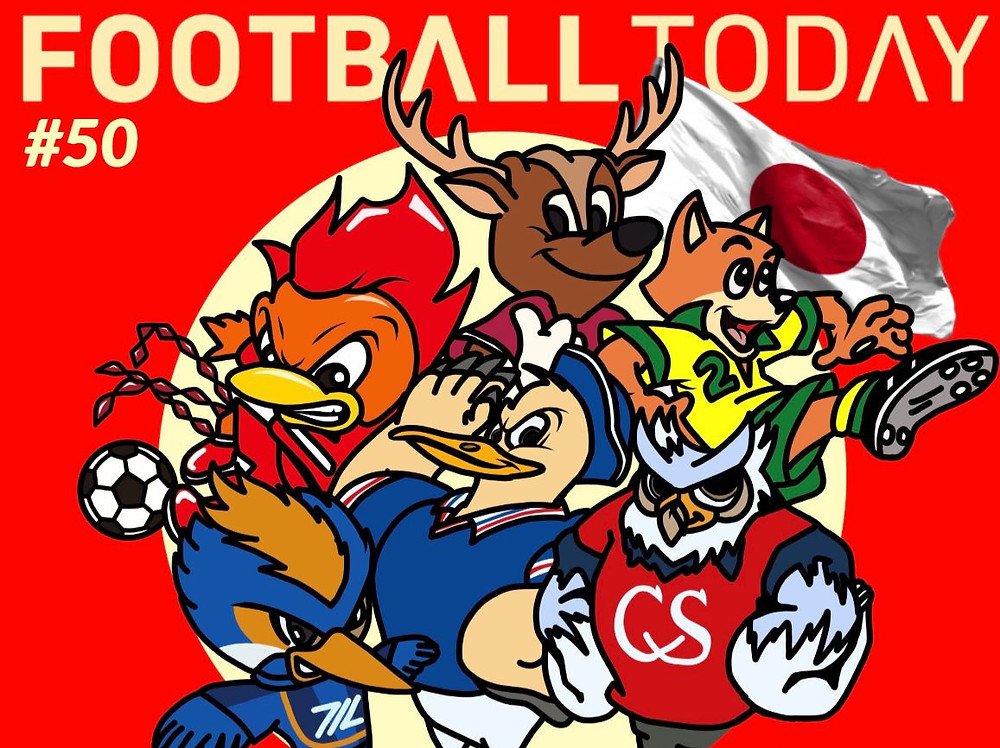
The following has been edited and abbreviated for text. For more details and information, along with musical scoring and news clips, listen to the Football Today episode below.
Ahead of the J-League’s 28th season this weekend, we look at how Japan’s fan culture is unique with Japan Times sports writer, Dan Orlowitz.
Massive Female Fanbase
“If you look at the demographics of who’s attending J-League games, 37.6% are women. And that’s an insane number that no country in the world can match. That reflects how the J-League presents this fun matchday experience that people of any age and gender can go and enjoy.”
Why do you think that number is so high?
“It’s a safe league. I mean, you’re not worried about getting killed by hooligans, you’re not dealing with just rows of motorcycle and mounted policemen on the way to stadium. two sets of fans can take the same train into the stadium and take the same train going back. It’s just the way that the League has always been. It’s a family friendly environment. And that’s just not something that a lot of leagues in Europe and and elsewhere can really offer.
Themed Games
“The examples that I always give when I’m asked about Match Day events are usually from Kawasaki Frontale just because they had one of the best matchday sort of planners in the country. Kawasaki had this guy named Haruka Amano, he worked on the 2002 World Cup, and then he joined Kawasaki and he did things like coming up with the ‘It’s a Sumo World’ promotion, where they worked with sumo wrestlers. They have a little ring setup outside the stadium where they have demos and like little sparring bouts. They do all of the match day promotions in the style of Sumo promotions, they get the guy who does the announcements at Sumo tournament’s to introduce the starting lineups. All the graphics on the jumbotrons are like so style.”
“Kawasaki did this tie up with JAXA [Japan’s Space Agency], where they had Kengo Nakamura, a club legend, national team legend….he spoke with astronaut Takiya Onishi on the International Space Station, they connected him via video link, like after the game and they had him and some kids talk to Onishi and ask questions. And during the summer Kawasaki had this space themed uniform, they did a collaboration with the comic artist who did the famous manga, Space Brothers, and it’s all these unique things that you wouldn’t get at every other stadium.”
“They had Godzilla kick out the first ball a couple years ago. Godzilla in the costume taking penalty kicks, like, you can’t beat that.”
“These clubs, they don’t have the gigantic promotional budgets of American sports teams and they aren’t able to automatically draw the kinds of crowds that Premier League clubs do or that like big clubs like Barcelona do week in week out, so they have to be creative. And that leads to some very interesting things.”
Ground Hopping Tourism
“You talk to female fans, and you say, ‘well, if you are a Tokyo supporter, come out to Osaka, you’ll get to eat great food, you’ll get to see a cool game, you’ll get to experience all this sort of stuff that’s tangential to the match itself.’ But this is part of the matchday atmosphere. If you’re an Arsenal fan, and you’re going to Manchester City, like you’re taking the train you’re driving, you’re watching the match and you’re going home. In Japan, where every city is relatively convenient to each other in terms of travel time and distance and there’s a really great public transportation network, including both rail and air routes, it’s easy for fans to go and spend two nights in Nagasaki or Fukuoka or Sapporo or Sendai, and make a weekend out of it.
Borrowing Songs and Dances from Europe and South America
“You have to remember that when the league started in 1993. There wasn’t a fan culture. So what did all of these fans do? They looked at the league’s and the competitions and the clubs they knew. And that was European clubs. That was South American clubs, Brazilian, Argentine, English, German, Italian especially, Spanish, Dutch. And those are the fan cultures that inspired Japanese supporter culture and mixed together with the sort of corporate organized fan culture that you could already see in the JSL, the predecessor to the J League, and in Japanese baseball.”
“For example, you have these organized cheering sections with a clear hierarchy and organization and everyone knows what they’re singing. So that’s why you get clubs where the fans are singing for 90 minutes and it’s all very organized and unstructured. But if you listen to the melodies, these are songs that are being sung in Brazil, in Argentina, in Italy and each club has this sort of distinct flavor. Shimize S-pulse, for example, has a lot of Brazilian rhythms and they do a samba if they win after the match. FC Tokyo sings, you’ll never walk alone.
“Gamba Osaka because of their Italian influence early on, they have sort of a lot of songs like Inter Milan fans will sing, and all that combines with Japanese pop culture that inspires a lot of chants and songs. So you got this really glorious mix of all these different football cultures in Japan of all places.”



